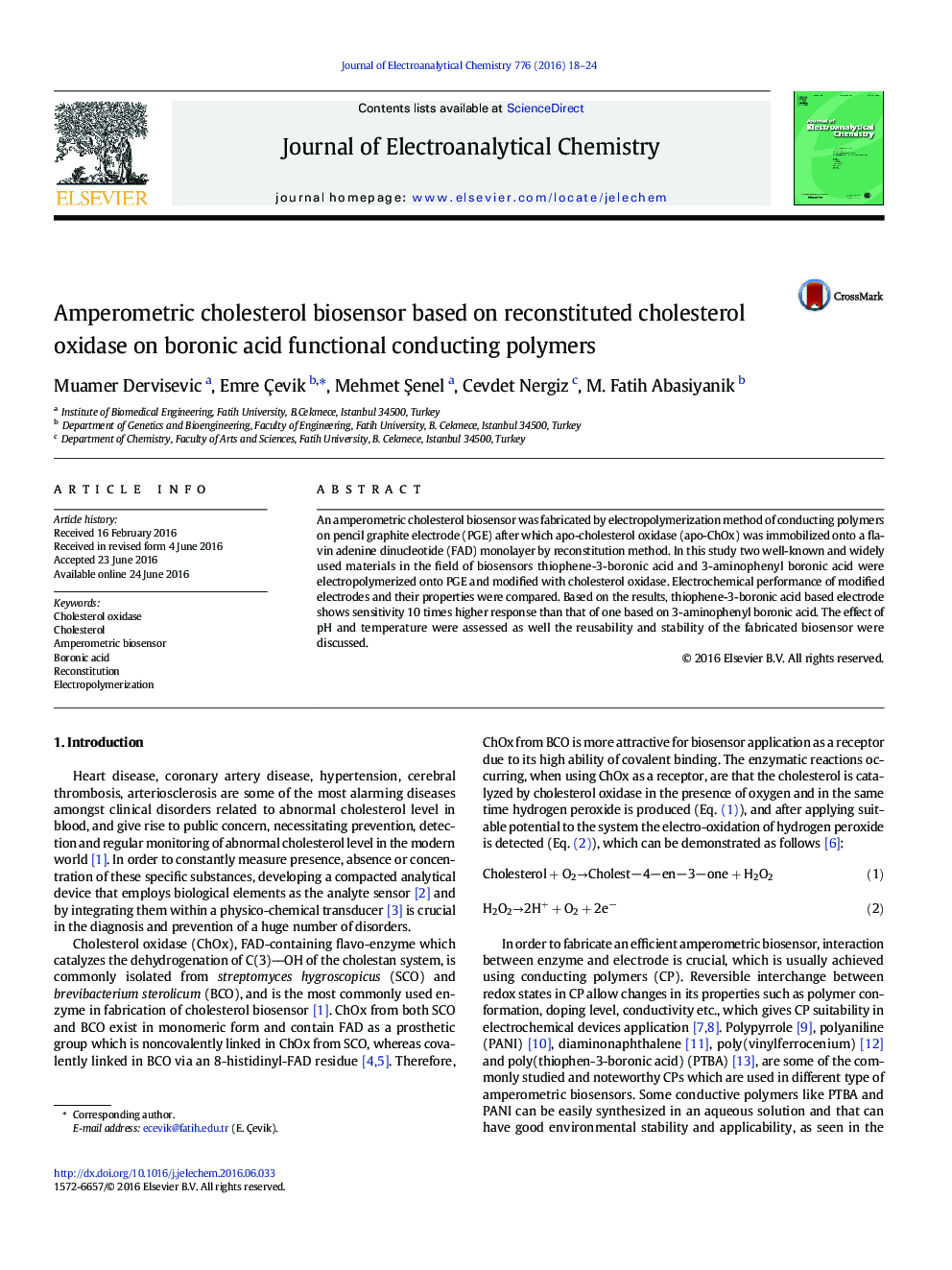| Article ID | Journal | Published Year | Pages | File Type |
|---|---|---|---|---|
| 217764 | Journal of Electroanalytical Chemistry | 2016 | 7 Pages |
•An amperometric cholesterol biosensor was fabricated.•Thiophene-3-Boronic acid and 3-aminophenyl boronic acid were electropolymerized.•Apo-cholesterol oxidase was immobilized via FAD monolayer by reconstitution method•The biosensor was used to analysis of cholesterol with high sensitivity.
An amperometric cholesterol biosensor was fabricated by electropolymerization method of conducting polymers on pencil graphite electrode (PGE) after which apo-cholesterol oxidase (apo-ChOx) was immobilized onto a flavin adenine dinucleotide (FAD) monolayer by reconstitution method. In this study two well-known and widely used materials in the field of biosensors thiophene-3-boronic acid and 3-aminophenyl boronic acid were electropolymerized onto PGE and modified with cholesterol oxidase. Electrochemical performance of modified electrodes and their properties were compared. Based on the results, thiophene-3-boronic acid based electrode shows sensitivity 10 times higher response than that of one based on 3-aminophenyl boronic acid. The effect of pH and temperature were assessed as well the reusability and stability of the fabricated biosensor were discussed.
Graphical abstractFigure optionsDownload full-size imageDownload as PowerPoint slide
